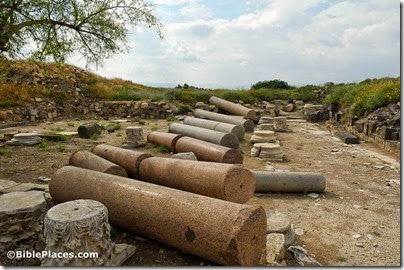From the Jerusalem Post:
University of Haifa archaeologists announced Monday that they have recently discovered items which have shed light on an earthquake that occurred in 363 CE in the ancient city of Hippos which overlooks the Sea of Galilee.
Hippos, near modern-day Kibbutz Ein Gev, was the site of a Greco-Roman city-state. Archaeologists digging at the Hippos excavation site, known as Susita in Hebrew, uncovered a woman’s skeleton and a gold dove-shaped pendant under the tiles of a collapsed roof. In addition, they found the marble leg of a statue and artillery from some 2,000 years ago.
“Finally the findings are coming together to form a clear historical-archaeological picture,” Dr. Michael Eisenberg, the head of the excavation said.
The excavation at the site has been ongoing for the past fifteen years. Hippos, which was founded in the second century BCE, was the site of two major, well-documented earthquakes, the first of which took place in 363 CE. The earthquake caused major damage but the city recovered. The second earthquake, in 749 CE, destroyed the city which was then abandoned, never to recover.
The full article includes photos. I don’t believe there is much dramatic archaeological evidence for the earthquake of 363, though according to fifth-century church historians, this earthquake ended efforts to build a third temple in Jerusalem. Wikipedia provides a few references. David B. Levenson recently published a more technical article in the Journal of Late Antiquity: “The Palestinian Earthquake of May 363 in Philostorgius, the Syriac Chronicon miscellaneum, and the Letter Attributed to Cyril on the Rebuilding of the Jerusalem Temple.”
Photo from Galilee and the North
